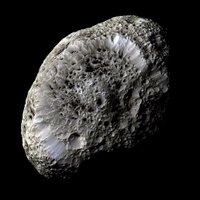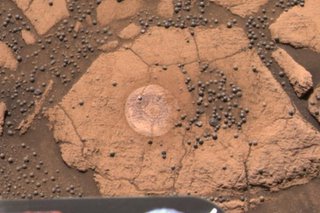New Horizons: the first spacecraft to visit Pluto and Charon (Pluto’s moon).
 New Horizons was launched on Jan. 19, 2006 and will flyby Pluto in July 2015. It will continue to the outermost solar system in order to perform flybys of the Kuiper Belt Objects beyond the orbit of Pluto. The science instruments onboard the spacecraft will provide information on the surface properties, geology, interior makeup and atmospheres of the bodies it encounters.
New Horizons was launched on Jan. 19, 2006 and will flyby Pluto in July 2015. It will continue to the outermost solar system in order to perform flybys of the Kuiper Belt Objects beyond the orbit of Pluto. The science instruments onboard the spacecraft will provide information on the surface properties, geology, interior makeup and atmospheres of the bodies it encounters.Image: Liftoff of the Atlas V carrying NASA's New Horizons spacecraft to a distant date with Pluto. Image Credit: NASA/KSC
Mars Reconnaissance Orbiter: seeking evidence for long-duration water on Mars and scouting future landing sites
 MRO was launched Aug. 12, 2005, and will arrive at Mars in March, 2006. MRO will use its science instruments to closely examine the surface to look for minerals or features that are evidence of long-term water on Mars. It will also look for underground water or ice and monitor the atmosphere.
MRO was launched Aug. 12, 2005, and will arrive at Mars in March, 2006. MRO will use its science instruments to closely examine the surface to look for minerals or features that are evidence of long-term water on Mars. It will also look for underground water or ice and monitor the atmosphere. Image: Mars Reconnaissance Orbiter (artist's conception). Image credit: NASA/JPL
Stardust: NASA’s comet sample return mission
Stardust was launched Feb. 7, 1999, and collected cometary dust during its close encounter with Comet Wild 2. The spacecraft also collected interstellar dust (consisting of both materials from outside our solar system and possibly materials left over from the formation of our solar system). Stardust captured the dust in a silica-based aerogel.
 The rendezvous occurred January 2004, and the samples were returned to Earth on Jan. 15, 2006. We expect some really interesting new research to come from these samples now that they are back here on Earth where they can be studied thoroughly in the laboratory.
The rendezvous occurred January 2004, and the samples were returned to Earth on Jan. 15, 2006. We expect some really interesting new research to come from these samples now that they are back here on Earth where they can be studied thoroughly in the laboratory.
Image: Composite of comet Wild 2. This composite image was taken by the navigation camera during the close approach phase of Stardust's Jan 2, 2004, flyby of comet Wild 2. Several large depressed regions can be seen. The images show an intensely active surface, jetting dust and gas streams into space and leaving a trail millions of kilometers long. Image credit: NASA/JPL-Caltech.
Cassini-Huygens: international exploration of the Saturn system
The Cassini Orbiter and Huygens Probe was launched Oct. 15, 1997, and arrived at Saturn in July, 2004. The Huygens Probe was released into the Titan atmosphere on Jan. 14, 2005, and provided the first images of the surface of Titan (the largest of Saturn’s moons, and the only moon in the solar system to have a thick atmosphere).
Mars Express: ESA’s first visit to another planet
Mars Express was launched Jun. 2, 2003 and arrived at Mars in December, 2003. It is the European Space Agency’s (ESA) first visit to another planet. Mars Express is seeking to answer questions about Martian geology, atmospheric science, and water, as well as the potential for life on Mars. Mars Express features a radar instrument, which is the first of its kind at Mars.
 Results from Mars Express include: the first detection of methane in the Martian atmosphere, evidence for recent volcanic activity on Mars (within the last 2 myr), and the identification of sulfates and phyllosilicates from orbit (evidence that water was present).
Results from Mars Express include: the first detection of methane in the Martian atmosphere, evidence for recent volcanic activity on Mars (within the last 2 myr), and the identification of sulfates and phyllosilicates from orbit (evidence that water was present).Image: Mars Express. The mission's main objective is to search for subsurface water from orbit (artist's conception). Image credit: ESA
Mars Exploration Rovers: NASA’s “twin robot geologists”.
The MERs were launched toward Mars in June and July, 2003, and landed on Mars in January, 2004. The primary goal of the rovers is to search for evidence of water activity on Mars. One rover (Spirit) landed in Gusev Crater, which was thought to be an ancient lake bed. The other rover (
Both rovers have survived more than one Martian year on the surface of Mars (approx. 2 Earth years).
















No comments:
Post a Comment